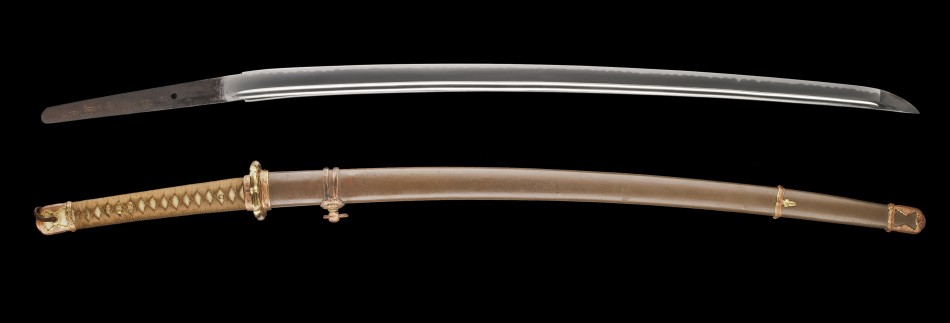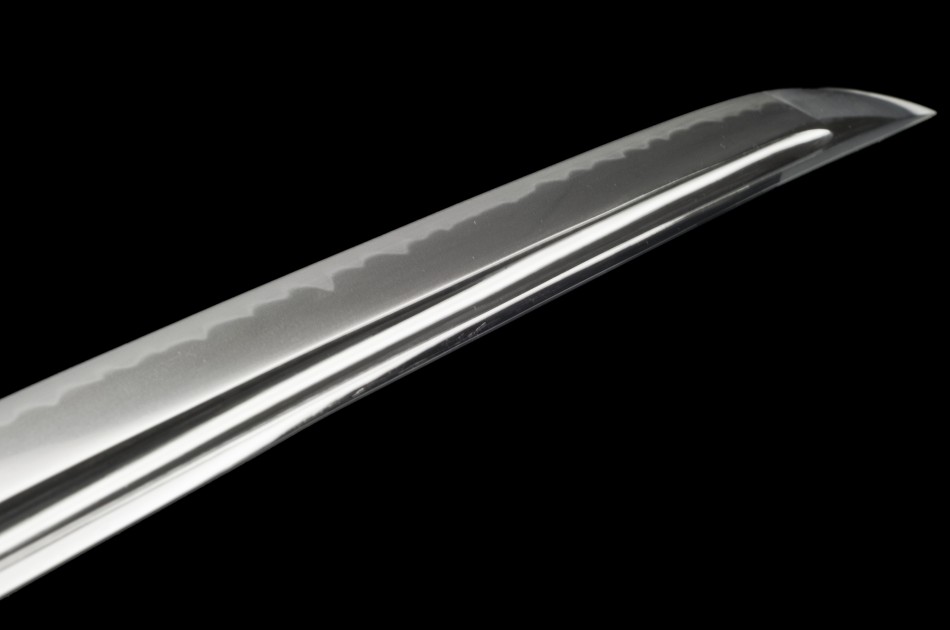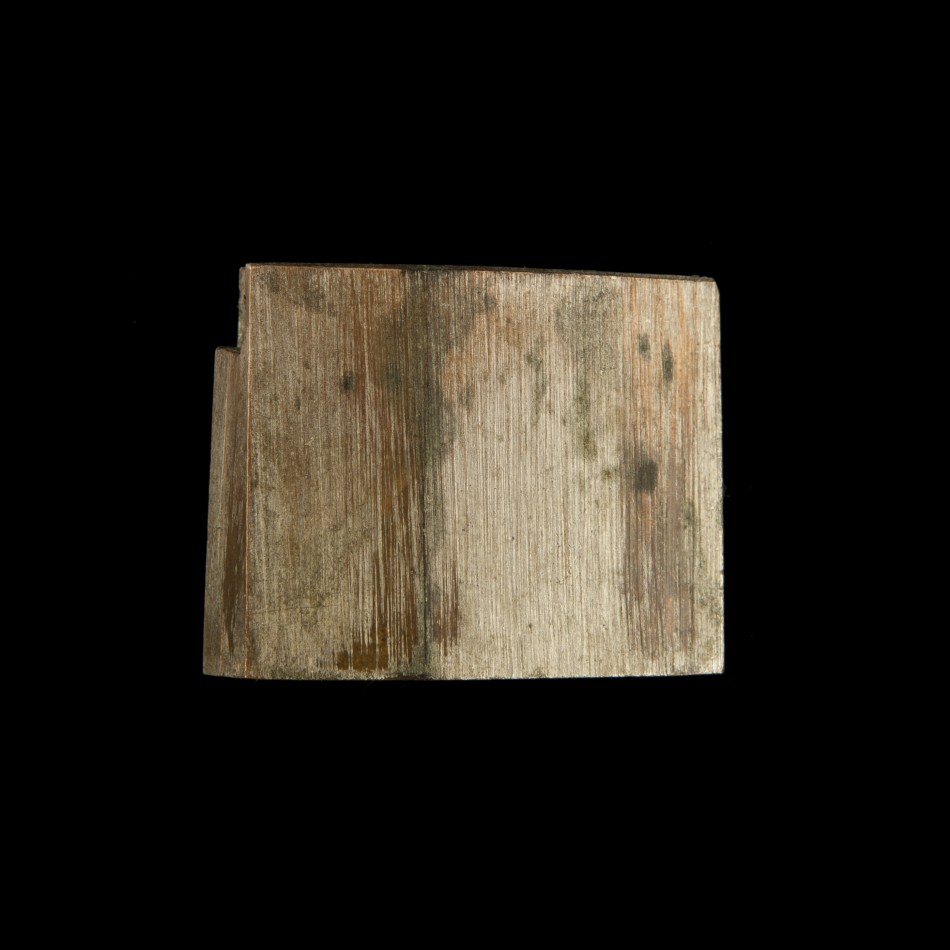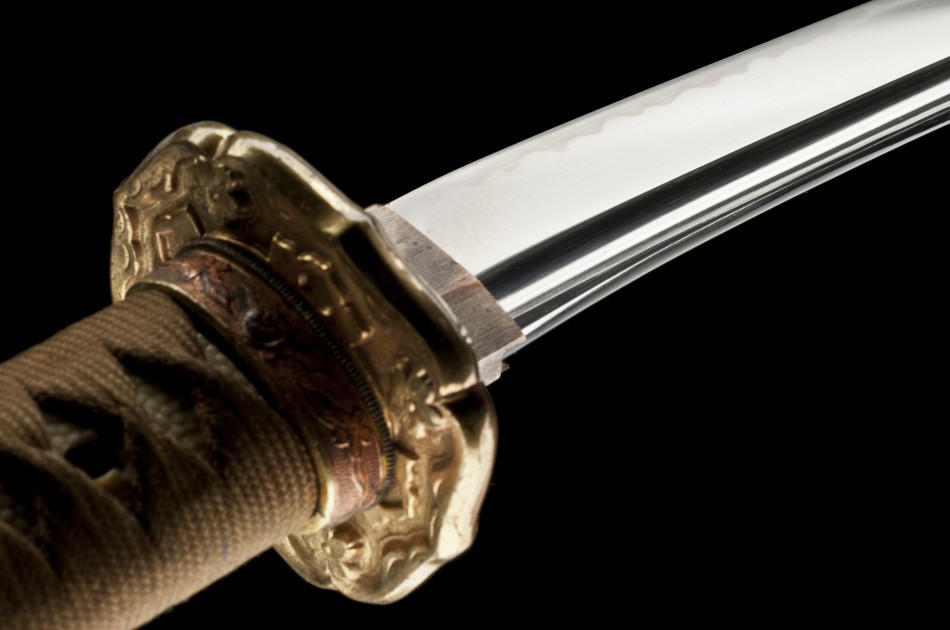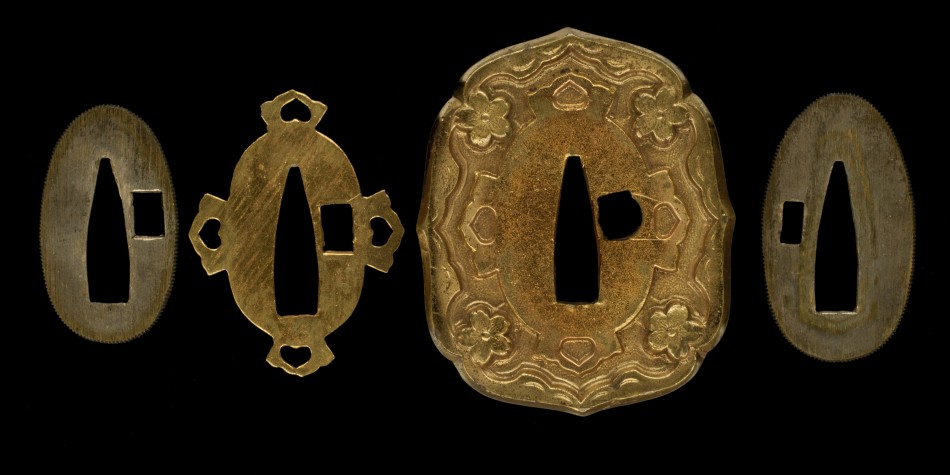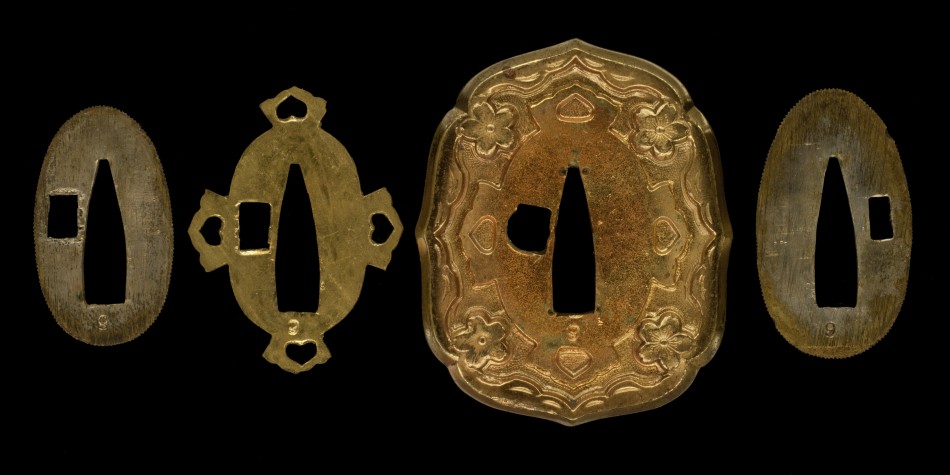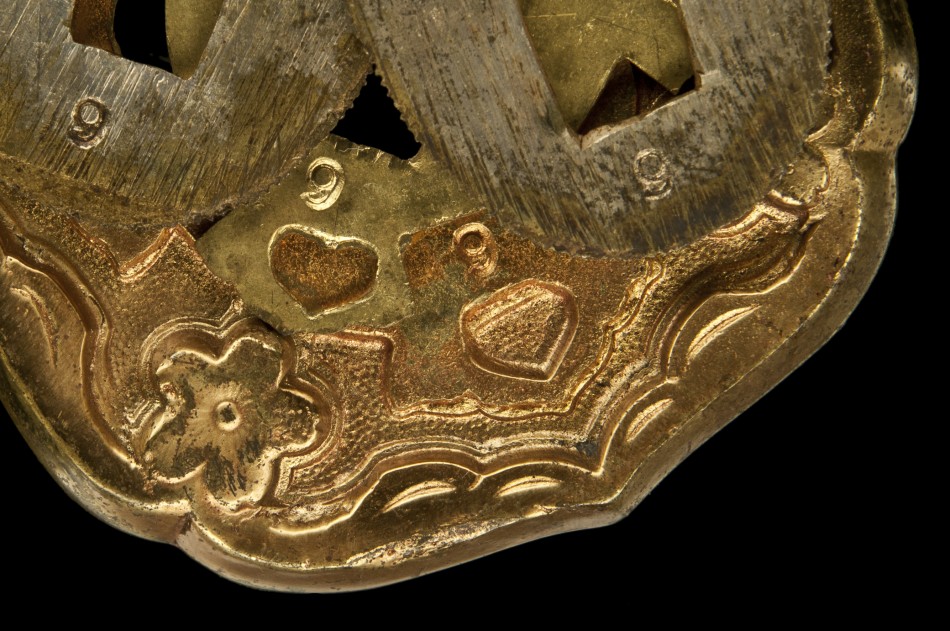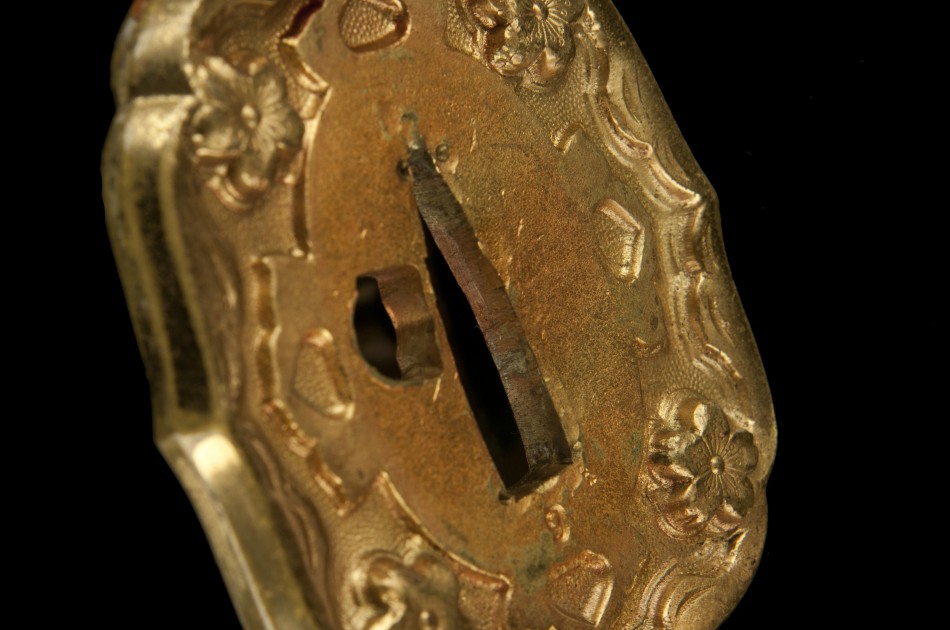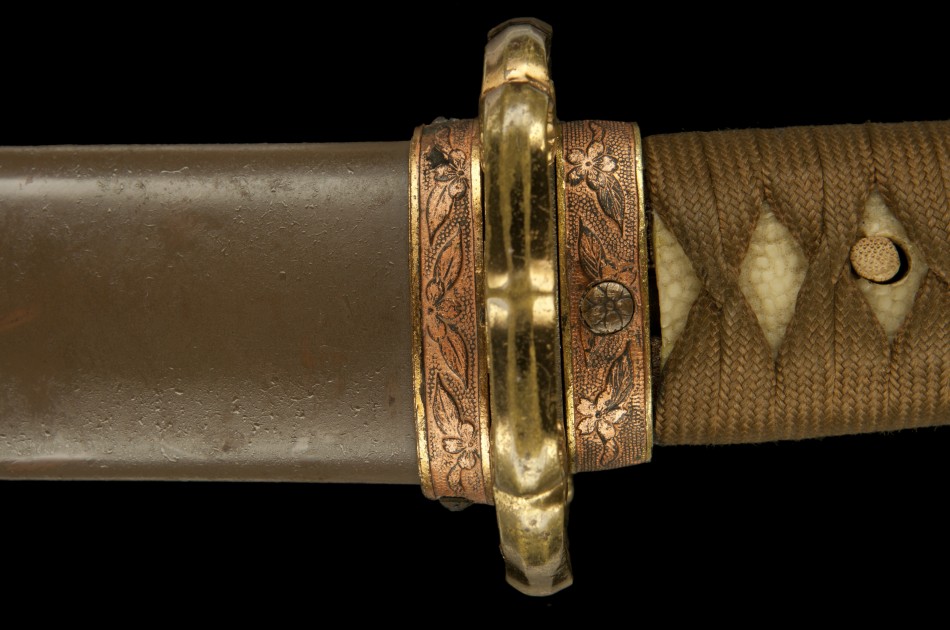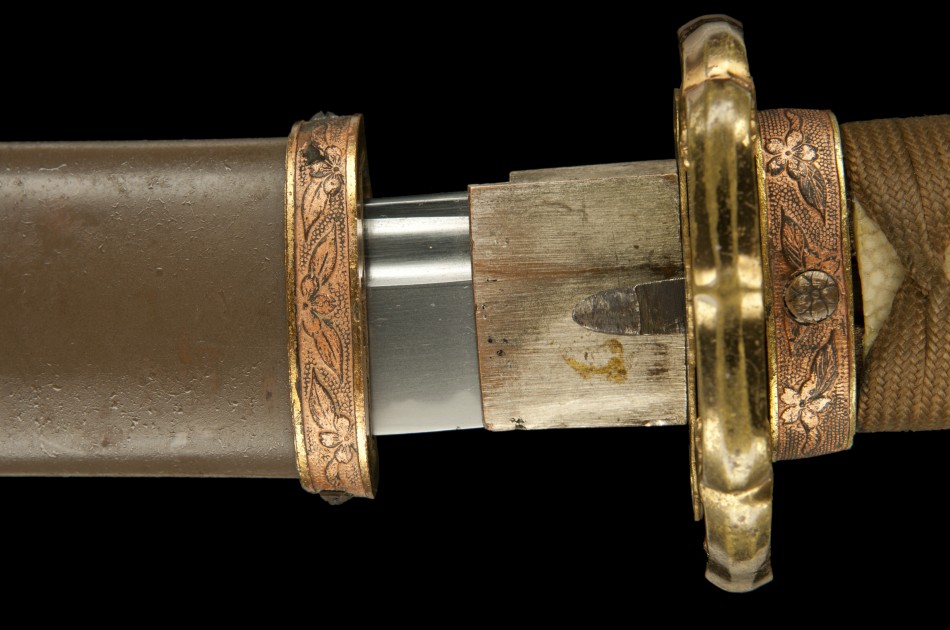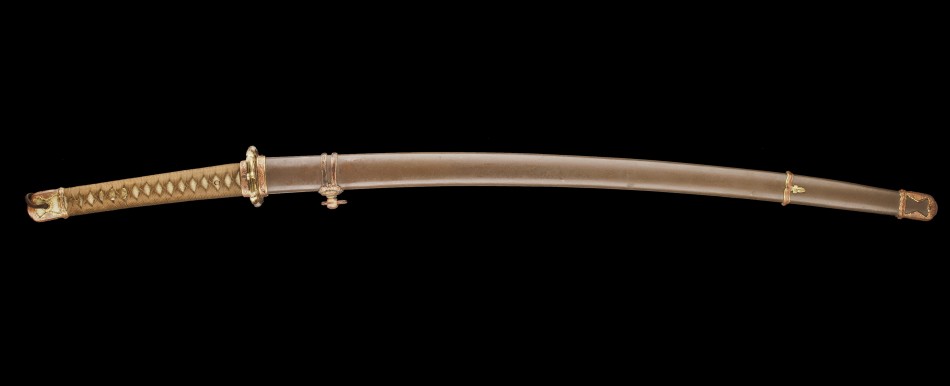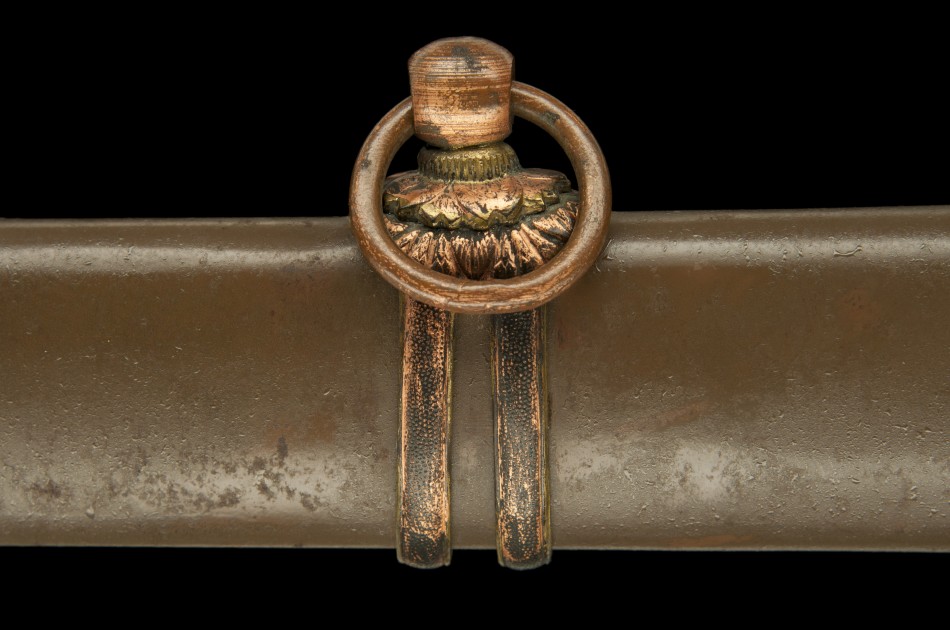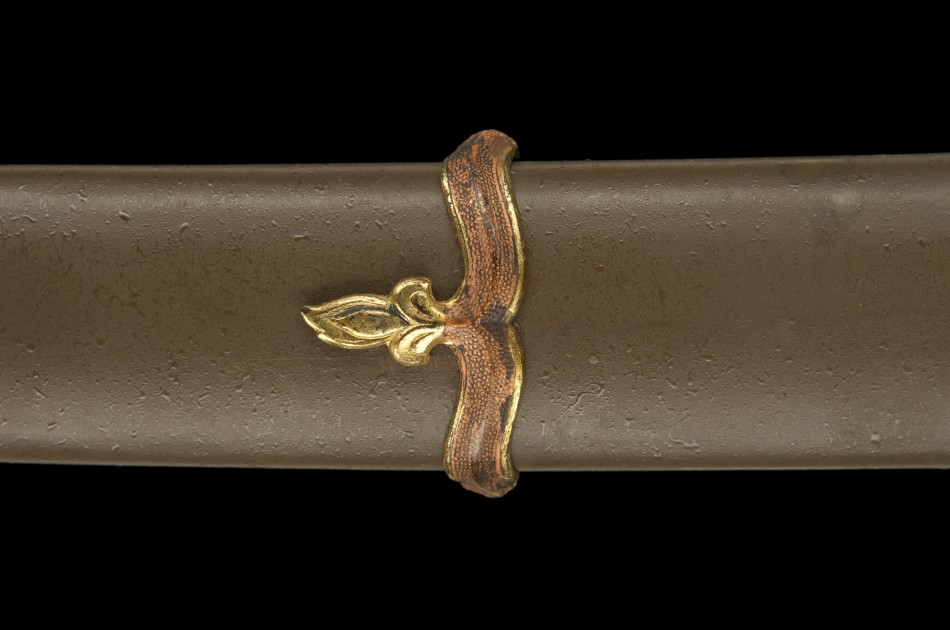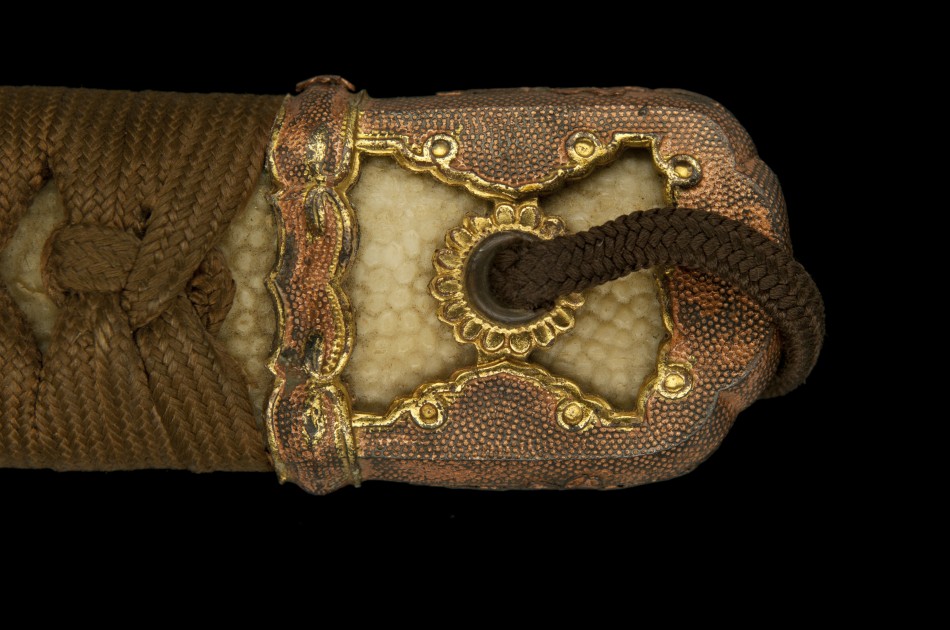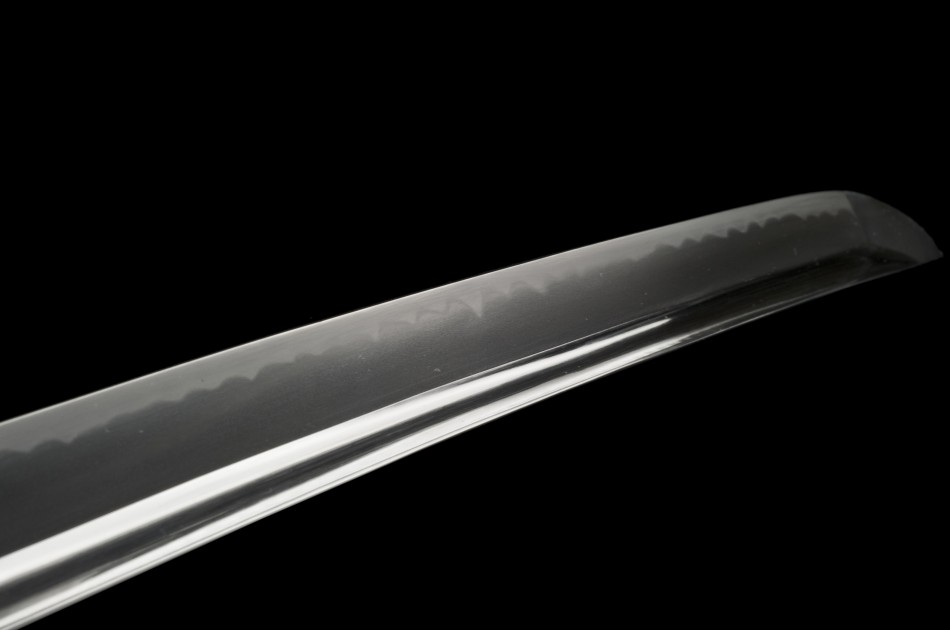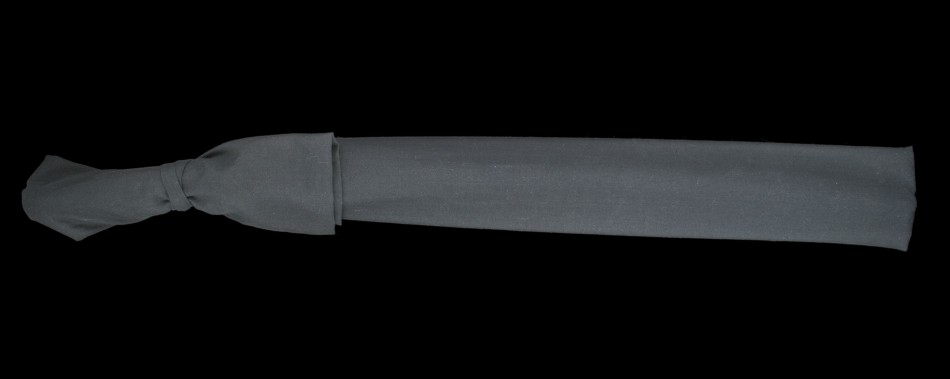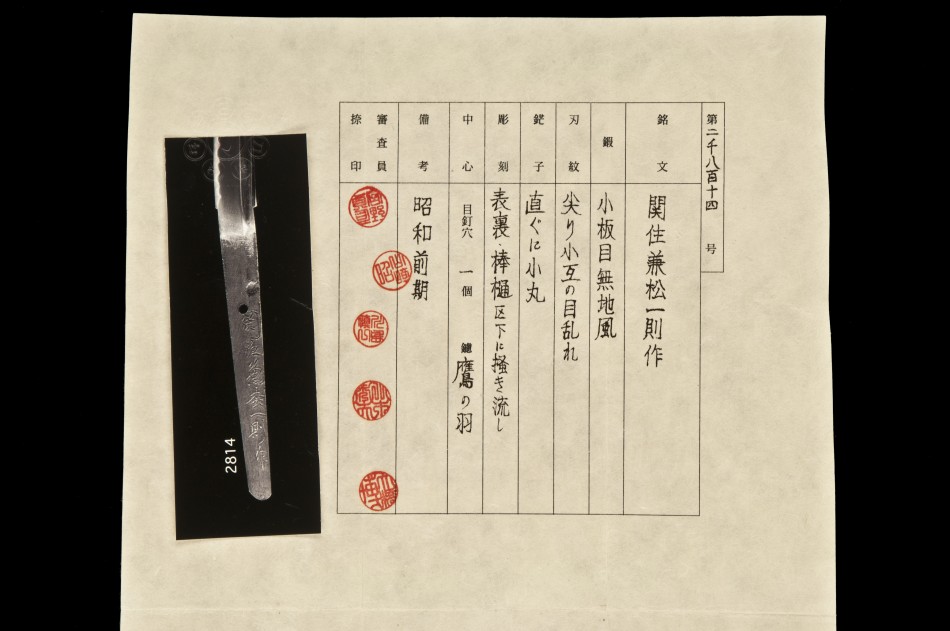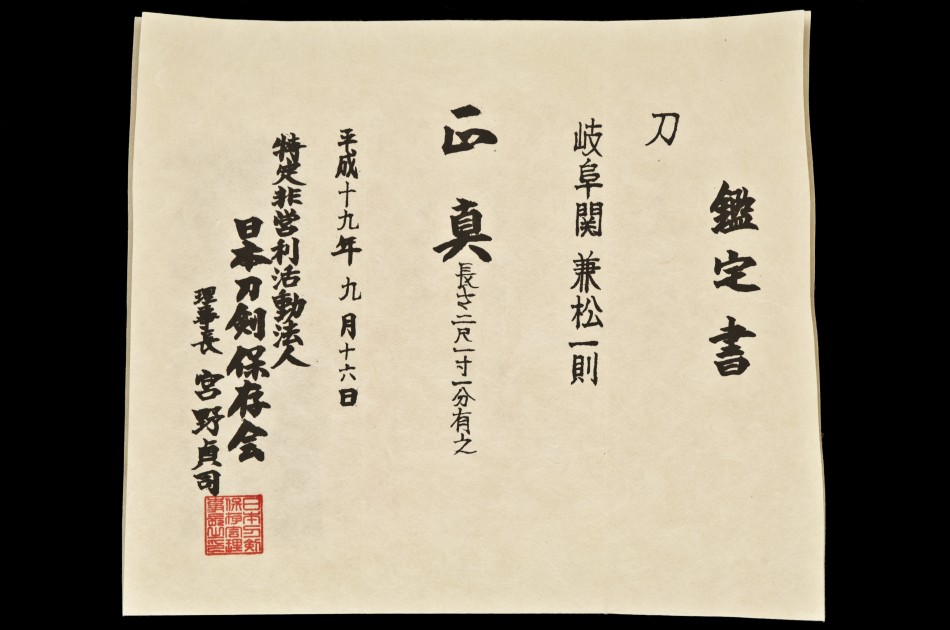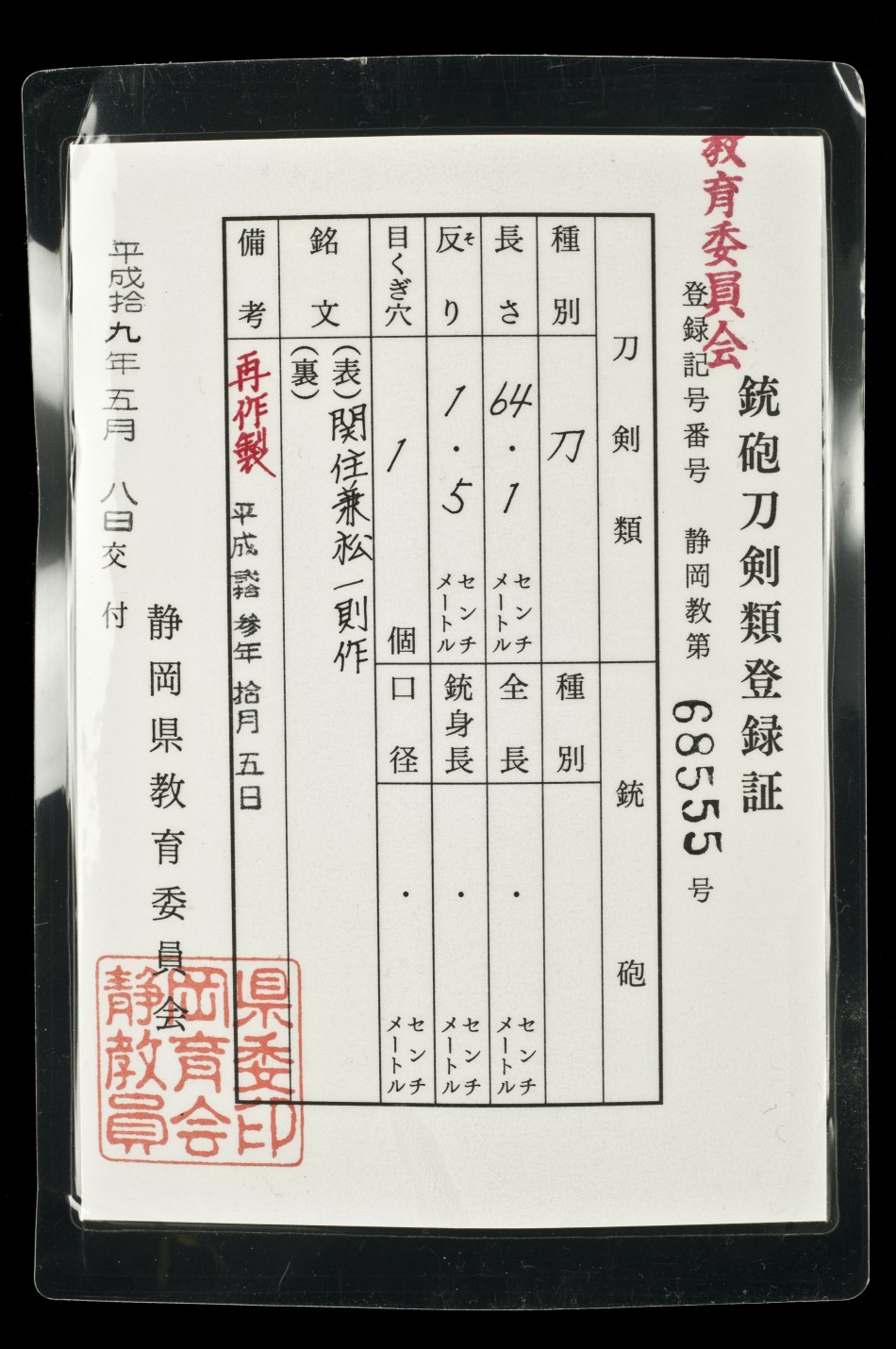AN UOMATSU ICHINORI WWII ARMY GUNTO
This sword has been sold.
Overview (full text description follows photos)
Type: Gunto (signed and made using traditional methods. This is NOT a mass produced sword.)
Item No.: ujgu008
Swordsmith: Uomatsu Ichinori (tang reads 関住魚松一則 = Seki Ju Uomatsu Ichinori)
Period: Early Showa (circa 1941)
Location: Seki (Gifu prefecture)
Length: 64.1cm (Katana length)
Curvature: 1.5cm
Hamon: Gunome (wavy temperline with )
Koshirae: Original WWII Japanese Army Gunto mounting
Included: NTHK certificate, koshirae (mountings), traditional katana carry bag, sword maintenance kit, illustrated maintenance guide, sword stand, full exportation support to send sword to home country
This sword was sold at Kamakura Sword Show IV.
Photos (click for larger view)
*All photos taken professionally by Eric Bossick for Unique Japan
A signed WWII Army gunto blessed with a beautiful full length bo-hi (groove)
The nakago (tang) reads 関住魚松一則 = Seki Ju Uomatsu Ichinori
This is a traditionally made sword; it has been forged with folded steel and water tempered.
Above & Below: Closer look at the gunome hamon (wavy temper line) with bold ‘peaks’
Seki area is famous for ‘Sambonsugi” a temper line that peaks every third wave
The made-to-measure copper and silver plated habaki
This is a sword handcrafted with skill and patience at a time when many mass produced swords were being introduced. A dedication to the swordsmiths of centuries past.
Above & Below: The seppa (washers) and the tsuba (guard)
Notice the No.”9″ stamped on the pieces. They are all matching originals.
The “hearts” represent the eyes of a wild boar or inoshishi.
The inoshishi is one of Japan’s 12 symbols of its yearly zodiac calendar signifies “direction with purpose”. As the inoshishi charged, they charged with focus – never wavering.
All Army and Navy guntos carry a Sakura (cherry blossom) theme.
The national flower of Japan, and the most masculine.
The Sakura is an important Samurai symbol because the cherry tree blooms for a very short time, and then the flowers simply disappear.
Like the Samurai warrior, the cherry blossom dies at the peak of its maturity.
A full length view of the katana.
The scabbard is an original ‘steel’ saya. It’s very heavy and predates the more common aluminium scabbards that came into being in the latter years of WWII.
Below: One of the gunto ashi (suspension mounts) to stabilize the sword when mounted.
Below: The fleur-de-lys design for the shibabiki
(an intermediate scabbard reinforcement binding the two halves together)
Above: The head of the sword, securely fastened as it was originally
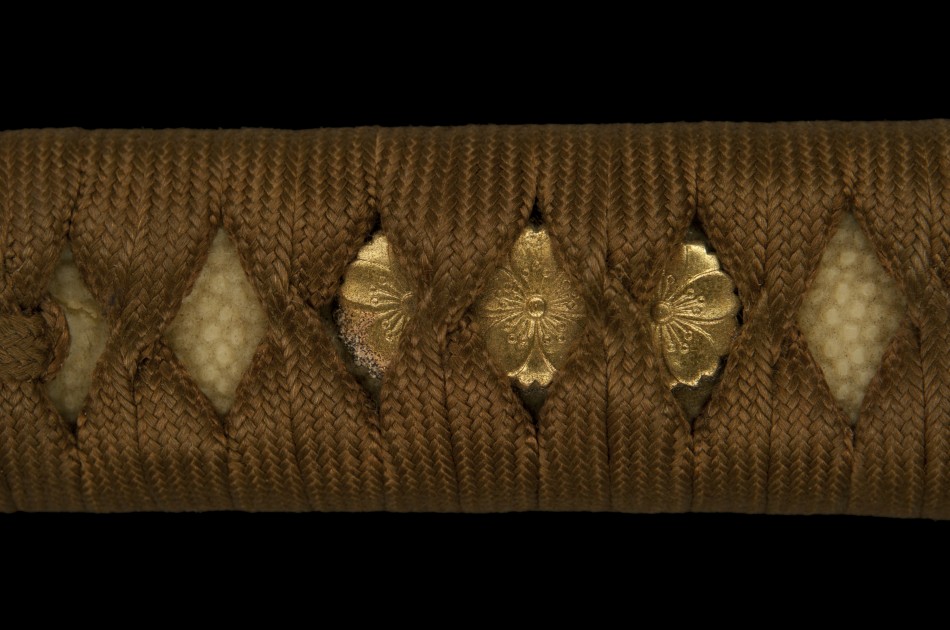
Above: The gunto’s classic sakura menuki (ornamental grips)
The kashira (pommel) has a cord sarute (sword knot loop) running through it
A look at the fine sori (curvature) and hamon of this 20th century katana
Above is the carry bag for the sword
Above & Below: NTHK Kanteisho certificate (A sword designated as Important by the Nihon Token Hozon Kai).
Stamped by 5 independent sword appraisal experts authenticate the signature.
Below: The sword’s torokusho (registration card)
Description:
I am very pleased to offer one of the finest WWII Japanese army gunto katanas swords I have had the pleasure of seeing.
Fully validated with NTHK certification with 5 judge hanko (personal stamps) that attests to the authenticity of the signature of Uomatsu Ichinori on the nakago (tang).
It is very rare to have a gunto piece with certification. This means that the sword was produced by traditional methods during a time when other mass-produced swords were being made in abundance.
A high-ranking officer almost certainly owned this katana.
All Army and Navy guntos carry a Sakura (cherry blossom) theme. The national flower of Japan and the most masculine one.
The Sakura is an important Samurai symbol because the cherry tree blooms for a very short time, and then they disappear.
Like the Samurai warrior, the cherry blossom dies at the peak of its maturity.
There are ‘blood’ grooves running along the blade of this katana. A groove helps to make a sword lighter and cut stronger as it takes the cross-section shape of an i-beam.
The scabbard is made of heavy steel, so it’s one of the originals. (It’s very heavy actually). Later made swords were housed in aluminum scabbards so that steel could be used elsewhere during the war.
All seppa (washers) and tsuba (guard) match with the ‘No. 9’ serial number. It is important that they do match when investing in quality guntos. PK
Questions?
To request further information or secure immediate ownership of a sword listed on Unique Japan, please contact us.
For steps toward ownership including all payment options, visit 5 Easy Steps to Owning an Authentic Japanese Samurai Sword.
ALL SAMURAI SWORDS from Unique Japan are GUARANTEED AUTHENTIC and come with a 3-DAY WORRY FREE Inspection Period.
Upcoming Sword Shows
If you have the pleasure of living in Japan or visiting the country, we strongly recommend that you come to one of our upcoming sword shows.
At each show, we have dozens of beautiful Japanese swords to you to discover and secure for your immediate ownership.
If you cannot make it to a show, but you see something you would like to own from our website please contact me for purchase inquiries.
Legal Exportation from Japan
Unique Japan has safely sent dozens of swords from Japan to countries all over the world. All legal exportation paperwork is included with every purchase. Please allow about 4 weeks for us to process and ship an order from Japan.



